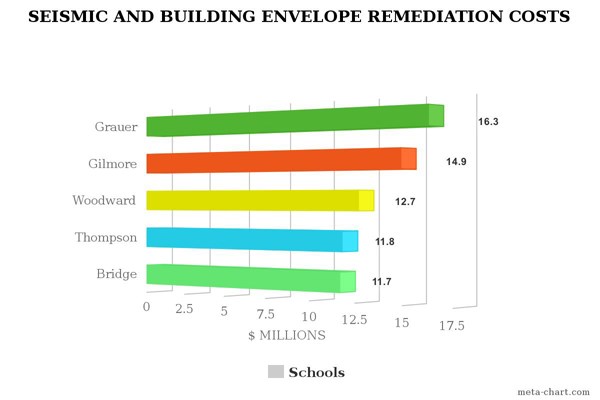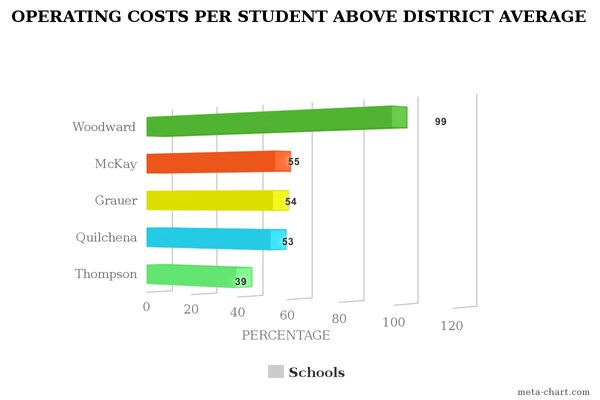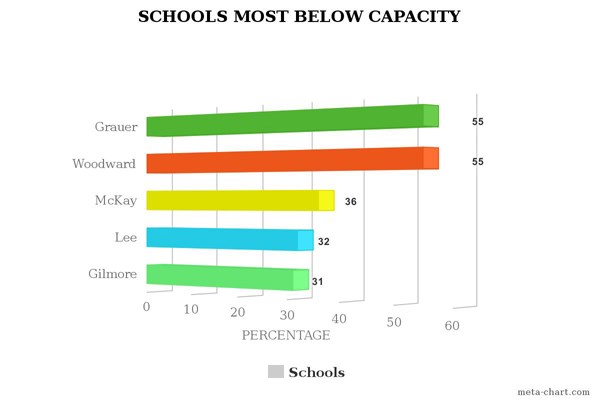‘I think it will be a logistical nightmare.”
That’s how Richmond School District secretary treasurer Mark De Mello summarizes the task ahead for both district staff and the Board of Education, as they decide what four or five schools to close and how those remaining open will get much-needed seismic remediation.
The process may mean schools slated to close could actually stay open for up to seven years.
Anne Chen, president of the Richmond District Parents Association (RDPA), said parent reaction to a board-approved shortlist of 16 schools under consideration for closure has been mixed.
“Some parents expected it and there were others who were surprised,” said Chen.
Perhaps no parents were more shocked than those at Diefenbaker elementary, noted Chen.
Parent Emi Dyck, Diefenbaker’s Parent Advisory Council (PAC) chair, is now in the midst of rounding up parents to inform them of the news and what the next steps are in the process, worried her Bulldogs will be shown the proverbial dog house.
“My initial reaction was feeling nauseous. I knew every single school put on that list was put there objectively. I knew there were actual reasons for being on that list. But it makes you feel gross when it’s your school, your neighbourhood and your community. I just feel sick,” said Dyck.
Diefenbaker parent Linda Wong raised concerns about special needs students, including her own Grade 2 daughter, being shuffled around.
“I was looking for an elementary school that would foster her needs. I wanted a school that would incorporate her in the classroom and we found that here at Diefenbaker,” said Wong.
“It would be sad for her not to be part of this community,” said Wong.
Over at Bridge, parent and RDPA member Andrew Scallion said he “wasn’t terribly surprised as there had been noises about Bridge before.”
However, “what surprised (parents) was the criteria and how they’re making this decision,” noted Scallion.
95 per cent capacity threshhold
De Mello said the district has been directed — by order of the Ministry of Education — to close schools in order to bring the overall level of student occupancy to 95 per cent for the sake of efficiencies. Only until this is achieved will the provincial government pay for seismic remediation work on 25 of the district’s schools.
The 95 per cent threshold is something Richmond Teachers’ Association president Al Klassen has called “arbitrary” and a result of systemic underfunding of public schools from the provincial government.
“That’s a high bar. I don’t know any other industry or social service that requires that utilization rate,” said Klassen.
The board (nor any individual trustees) has not made any official public statements concerning the province’s demands. When asked, board chair Debbie Tablotney stated: “As much as we may not like working within the 95 per cent, the reality is we must work cooperatively with the ministry.”
Klassen noted the closures will mean a few more efficiencies but also “slightly” more students per classroom.
‘Unfair’ to French Immersion
A school was only considered for closure if neighbouring schools had the combined capacity to take in all the students. If that was the case, the district then assessed various other conditions, such as overall enrollment, the number of students attending the school but not in the catchment, the number of students in the school’s catchment but not attending the school, operating costs and seismic upgrade needs.
French Immersion students were not included in the calculations as they are considered “portable,” according to De Mello.
This has Scallion questioning the decision-making. Scallion said because Bridge is French Immersion, not including such students “erases half our school population” and makes the school look underused, despite presently being over capacity.
“Bridge is set up for failure,” said Scallion.
De Mello said French Immersion schools will not be disadvantaged in the process. He noted French students need to move as a cohort and, as such, they cannot be considered as part of the general student population of a school, which will likely need to be split up in various directions (to other nearby schools) when a school closes.

De Mello noted the process will not be perfect, as geography plays another important role. For instance, a school that borders water naturally has fewer adjacent catchments in which students can go to.
“So if you happen to be a school in the centre of Richmond . . . it is true there are more choices for where a student will be relocated,” noted De Mello.Such was the case for Tait elementary, which is projected to operate 45 per cent below capacity by 2018. Tait was also affected by Highway 99, meaning it only had one school, Mitchell elementary, to turn to — and it is already full.
Geography was a key factor in saving the highly underused Sea Island elementary, noted De Mello. Not only do Sea Island’s neighbouring schools have no room, its catchment is broken up by the Fraser River.
“We haven’t done anything special for them and having to get across the bridge adds complexity,” explained De Mello.
Sea Island is considered an annex to Brighouse elementary, which is at capacity (although there are plans to add more wings to the school, bumping capacity from 500 to 1190 within the next decade).
Demographics at play
More complexities are added when the district factors in population growth and shifting demographics.
Most schools on the list are outside of central Richmond, where even above-average domestically-earned family incomes cannot keep pace with the cost of three-bedroom townhouses, let alone detached homes, leading to an exodus of children from Richmond.
De Mello said the district has accounted for planned growth along arterial roads and even the eventual densification of shopping centres, such as Seafair, Blundell, Broadmoor and Garden City.
The City of Richmond is proposing to densify arterial roads even more. Some on city council have pitched adding more multi-family units within single-family home neighbourhoods. De Mello was asked if adding more residential units in west and south Richmond could change projections and thus closure conditions.

“I think the short answer is, yes,” however, “we have so much excess capacity on the west side, it would take large changes to affect the final numbers.
“If something changed significantly enough and an influx of students came back in, I’m sure the board would be very open to reopening schools,” said De Mello.
As neighbourhoods densify, particularly in Downtown Richmond — from City Centre to Bridgeport and throughout the West Cambie area — so, too, will schools, case in point Anderson elementary and Brighouse. Talmey and Tomsett elementary schools are presently below capacity, but are projected to soon have extra wings added to them to accommodate growth. The over-capacity Cook elementary will also be expanded.
The district will need to build a new City Centre school for about 500 students, said De Mello. This will be paid for by selling some land from closed school sites, but the district hasn’t come to any conclusions yet and it has recommended to the board that real estate values not play a factor in closing any given school, noted De Mello.
“Some may be sold, some may be retained, I think. We always want to be able to look down the road and retain sites because land is such a valuable commodity,” said De Mello.
The decision to sell will come after the closure decisions, but saving green space will then become a factor, said De Mello.
“Many of our schools provide significant green space to the city. How that impacts the city, I’m not sure, so we’ll have to work that out,” said De Mello.
Scallion wonders how real estate values cannot play a role, considering the existing market forces. He noted Bridge’s fields are entirely owned by the district, whereas other school fields may not be.
Seismic juggling act awaits
As if dealing with the unknown of a hot real estate market isn’t enough, De Mello and staff must also figure out how schools will be seismically upgraded.
In order to address the upgrades, the schools that are deemed “closed” are actually likely to stay open temporarily for up to seven years.
The seismic upgrades will be significant and take a school out of commission for a year or more. This task is likely going to lead to students being juggled between schools.
“We’re going to have to temporarily move students to one of the closed schools, remediate and move them back. The closed schools will be staging schools so they might be physically used for a few years,” said De Mello.

A scenario could exist where students are forced to leave their closed school only to return for one more year and then be sent back to their seismically upgraded school.
De Mello noted some schools on the chopping block, such as Grauer, Gilmore, Bridge, Woodward and Thompson need so much seismic work done on them that it would be more cost-efficient to build a new school on the site. And just because major upgrades are needed doesn’t mean the school site will be shuttered.
Consultation process coming
De Mello noted socio-economic factors, extra-curricular activities and third-party organizations that use the schools will be factored into any recommendations.
Such issues will be sussed out during an upcoming round of public consultation, noted De Mello, who is aware of shortcomings of income reporting in the voluntary 2011 National Household Survey.
“There are other (socioeconomic) factors. We need to go back and look into them in more detail,” he noted.
As for the public consultation, the district is setting up school committees for parents.
Scallion said he hopes there will be more open houses than currently planned, after being disappointed by Monday’s “engineered” board meeting where the shortlist was accepted but parents weren’t able to ask all the questions they wanted to prior to a decision being made.
Klassen said the closures are sure to disrupt students, parents and teachers and the community at large.
Chen said she had hoped there would be more time for consultation, as PACs are now “scrambling” to get parent feedback come May.
Chen said she hopes parents work together on the closures and she noted that all students and parents will be affected even if a school isn’t closed.
For more information on school conditions and consultation, go online to LetsTalkSD38.ca
Scheduled open houses from 6:30-8:30 p.m.
May 17, Steveston-London secondary
May 18, Palmer secondary
May 19, Boyd secondary
Trustee emails:
Debbie Tablotney - [email protected]
Donna Sargent - [email protected]
Eric Yung - [email protected]
Alice S. Wong - [email protected]
Jonathan Ho - [email protected]
Sandra Nixon - [email protected]
Ken Hamaguchi - [email protected]
Minister of Education email:
Hon. Mike Bernier - [email protected]


